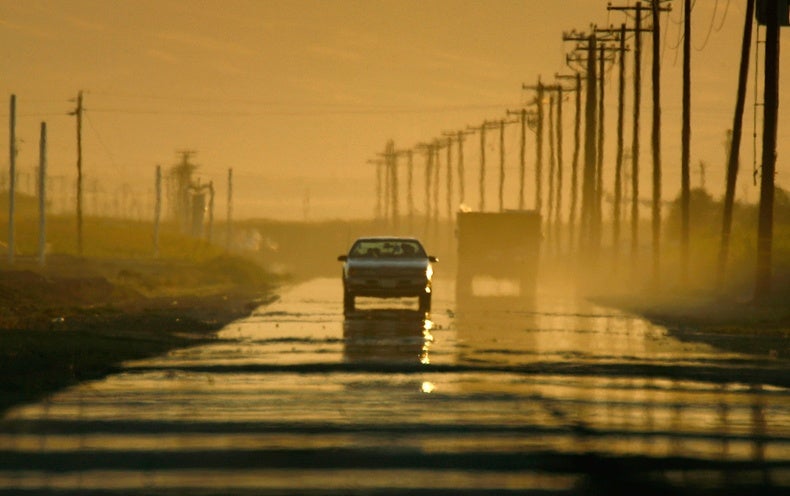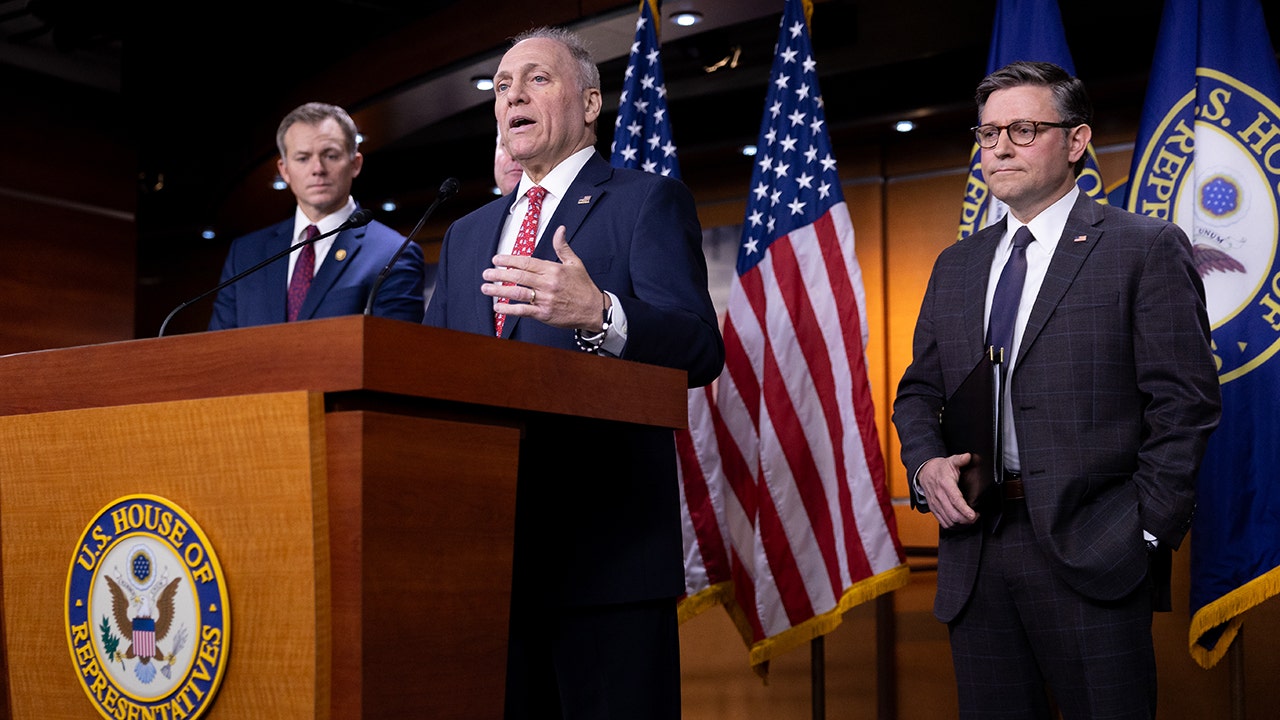The following is a transcript from New Scientist’s CultureLab podcast. Subscribe and listen for free here.
Christie Taylor: Hello and welcome to Culture Lab, I’m Christie Taylor. This is a show all about how science plays out in our cultural creations. Sometimes we talk about the science behind popular TV and movies, other times we talk to artist and authors about the research that influenced their works. Today’s interview is with University of Pennsylvania, climate scientist and activist Michael Mann, who’s newest book called Our Fragile Moment came out last week. It’s a sweeping history of the earth’s climate and how climate change has shaped humans’ societies, both for batter and for worse. Environment reporter James Dinneen spoke with Mann about the climates extremes we’ve seen this year, what the deep history of earth’s climate tells us about our future and why climate doom is now a bigger threat than denial for taking action.
James Dinneen: Michael Mann, thank you so much for joining the new scientist podcast. Before getting into the book and all the paleo climate business, I want to ask you about our climate at present. As you know, 2023 has been a big year for extreme weather. July was the hottest month on record, June, July and August were the hottest three month period on record. There have been extreme heatwaves on three continents. Huge temperature anomalies in parts of the ocean, millions of people breathing smoke from massive wildfires in Canada. Antarctic sea ice has reached new record lows. How are you making sense of all the extremes we’ve seen in 2023 in relation to climate change?
Michael Mann: Yes, thanks, it’s good to be with you and you know, it does, sort of, put an exclamation mark. This past summer and everything we’ve seen, it feels like climate change has shown us it’s hand in the form of these disparate extreme weather events, devastating extreme weather events that communicate the fact that the climate crisis isn’t twenty years away, it’s not ten years away, it’s here and it’s a matter at this point of how bad we’re willing to let it get. I often frame the challenge in terms of duelling principles. In this case for example, there is urgency. We understand the urgency because we see the devastating consequences of climate and action already, but there’s agency too. It’s not too late to prevent the worst impacts and this book in its own way really gets at that by looking at the record of past natural climate changes. It allows us to look at the various lessons that earth history has to offer us about the climate crisis today and some of those lessons are indeed about urgency, about the bad things that happen when the planet heats up and when it heats up rapidly. But one of the things it also conveys is that, you know, I call it this fragile moment because all of human civilisation essentially was born during this roughly 4,000 year period, 6,000 year period, if you want to extend it a little further back, a fairly stable, global climate and that’s what allowed us to build this massive infrastructure to support what is now more than eight billion people on the plant, but that infrastructure is dependent on the conditions in which it was built remaining so.
And what we’re seeing is a rapid departure because of fossil fuel burning and the warming on the planet. We’re leaving that envelope of variability and it’s the rate of warming and the impacts that it’s having that presents such a challenge. So, the question is, what do we see from past climate events and what it collectively tells us is, yes, if we fail to act, if we continue on the course that we’re on, then we will see something that stats to resemble the dystopian futures that Hollywood and science fiction have given us. But if we do act and we act rapidly and concertedly then we can still remain in this fragile moment.
James Dinneen: One theme and a point that you make throughout the book is the importance of embracing uncertainty, at least in the way that we communicate about climate change and what’s behind particular anomalies. I know there’s been a huge amount of debate around all of the different factors lining up this year to contribute to heat extremes. Whether it’s changing in shipping emissions. Whether it’s volcanic eruptions and climate change and climate change from rising concentrations of greenhouse gasses all adding up together. So, how do you talk about uncertainties that are inherent in any complex science, like the science of climate change without feeling denialism or alarmism? How do we embrace uncertainty in how we communicate about climate change?
Michael Mann: Yes. We’ve seen an effort to hijack the discussion of uncertainty by climate deniers and contrarians and delayers and what I call inactivists, the forces of climate inaction and again, it’s always been a fallacy this idea that uncertainty is a reason not to act. When in fact, it’s a reason for even more concerted action because of the very real possibility that the impacts will be even worse than our models predicted. Now, when it comes to the warming of the planet, it’s right in store. The warming is what we expected it would be at this point if we continued on this fossil fuel driven path that we’re on, but what we’ve been surprised by are some of the impacts of that warming and the ice sheets are losing ice faster than we expected and sea levels rising sooner than we expected and the great ocean conveyor is slowing down earlier than we expected in part of as a result of that melting ice and the freshening of high latitude waters. And those extreme weather events that we’re seeing and some of our own research involves understanding the mechanisms, the complex behaviour of the jet stream and how it is creating these very persistent stuck weather patterns where the same regions. As we’re seeing right now, areas in Southern Europe, in the Mediterranean that have just been dumped on. Where those weather systems just remain in place for day after day and you get that extreme flooding. Or a heat dome remains in place for weeks on end, and so, you get the extreme drying and the extreme heat and they combine to give massive wildfires.
This goes beyond what we predicted at this point. So, uncertainty to reiterate that message is not our friend. If anything, it’s our enemy and it’s a reason for even more concerted action and the episodes that we look at in the deep past of earth’s climate history, reinforced that message because there are examples of mechanisms that instil a certain amount of resilience in the climate system and that’s a good thing. There are homeostatic mechanisms that keep earth within liveable bounds, but if you push the system too hard, if you hit it too hard, you can leave those bounds and that resilience gives way to fragility and that fragility can give way to a runaway climate scenarios. In fact, we talk a lot about runaway warming and that that would be very difficult to see here on earth because we’re not like Venus, we’re further from the sun. We probably can’t create a runaway Venus like greenhouse effect, but we don’t need to extinguish all life on earth. We just need to warm the planet by another ten degrees or so and we will start to see the vast majority of our planet become unliveable.
That’s on the hot side, but on the cold side we actually do see runaway scenarios. It was a snowball earth episode about two and a half billion years ago. The sun was less bright then, the earth had a tendency to run colder. Although the greenhouse effect warmed it up, so that life could exist, but we did see this one incident where there was a massive increase in oxygen due to photosynthetic bacteria that emerged at that time that filled up the atmosphere for the first time with oxygen. The oxygen scavenged all the early methane, which is a potent greenhouse gas and the earth cooled down rapidly and more ice formed, and the formation of ice cools the planet more because it reflects more sunlight to space, and you get a runaway effect. You get a vicious cycle and earth literally ran away into a-, it become a snowball. It was entirely encased in ice and life only survived through certain, like hydrothermal vents and maybe shallow pools of water at the tropical ocean surface on top of the ice. So, it’s a reminder. You hit the system too hard and in this case, it was life itself hitting the system too hard and what are we doing today? We are life. Human beings and if we hit the system too hard, it will exhibit, you know, maybe not a runaway warming event but a dramatic enough warming of the planet to make it very difficult for human civilisation to continue.
James Dinneen: As you just mentioned there, the story of climate change on earth is far, far longer and more accident than the past few millennia or even the past century. This is just the most recent and unprecedented chapter of a much longer history of earth climate. Stepping back from that, I mean, you just mentioned snowball earth there. You alluded to the faint, young sun. What to you is one of the most fascinating or misunderstood periods in our planet’s epic climate history?
Michael Mann: That’s a great question. We could go in so many different directions with that question and I do think earth history is fascinating. We’ve got more than four billion years of lessons. We might as well look at them, you know, and too often we focus on a shallow period of time. Maybe the past few millennia. The hockey stick reconstruction that we published 25 years ago showed that the warming is unprecedented in 1,000 years, but we’ve got much more than 1,000 years to look at. We’ve got billions of years and there’s so many lessons in those billions of years and we could spend a lot of time trying to unpack them all. But in terms of what events are the most misunderstood. I would point for example, to the so called PETM or the Paleocene-Eocene thermal maximum. We call it the PETM. It’s about ten million years after the asteroid impact that killed the none avian dinosaurs and I say none avian because birds are technically dinosaurs. They’re still with us, so next time you see a bird in the sky, you’re seeing a dinosaur, that’s what’s left of them. Actually, any larger than a dog died off in this massive what was the equivalent of a nuclear winter. It was an impact event, but it was similar to what would happen if we had a global thermos nuclear war and there’s all the chapters, chapter four on those parallels, which I think are very interesting.
But the most misunderstood, probably the PETM. It was a period of rapid warming and by rapid, we mean over tens of thousands of years. There’s nothing in the geological record that compares to the rapidity of the warming we’re creating today. I mean, we’re warming the planet by degrees over tens of years, not tens of million or even tens of thousands of years. So, we call the PETM is, sort of, our best analogue for a rapid global warming event in the geological record, but it was slow by comparison with what we’re doing today. Rapid from a geological standpoint, planet warmed maybe four degrees, five degrees Celsius, nine degrees Fahrenheit, warmed quite a bit over ten thousand, twenty thousand years. It was due to a massive input of carbon from volcanic eruptions that tapped into a reservoir of a very carbon rich reservoir in the solid earth, not in the vicinity of Iceland. It’s a volcanic region today because it’s a spreading centre and a hot spot combined, and it was a source of great volcanism. And so, there was all this CO2 that was spewed into the atmosphere over a fairly short period of time. It’s our best natural experiment for what we’re doing today, but it was run a thousand times slower, or at least a hundred times slower then today.
One of the things that’s misunderstood here, you’ll often hear climate doomers or doomists. They don’t deny climate change, which is problematic. They deny we can do anything about it. They insist that we’re seeing runaway warming from methane that is escaping from the arctic into the atmosphere. It’s another one of those vicious cycles and we’ve started it, and we can’t stop it. So, we’re all going to be extinguished, all life on earth will be extinguished in a matter of a decade or so, no matter what we do. There are prominent voices in the community who have literally made that claim. It doesn’t stand up to scrutiny, what’s happening today, but one of the things they’ll often do is they’ll point to past events like the PETM, and they’ll say, ‘Look, that’s what happened back then, it’s happening to us now.’ That’s not what happened. There wasn’t a massive release of methane into the atmosphere. The latest studies suggest that methane feedback added maybe 10% to the carbon output. What was the carbon? It was CO2. The same CO2 that we’re producing today at an even faster click from fossil fuels burning. So, the real lessons of the PETM are that CO2 was the cause of the problem and we are the cause of the problem, as long as we continue to burn fossil fuels, but there’s no evidence for a runaway, you know, methane driven warming that would, sort of, you know, it feeds this notion that there’s nothing we can do about it, that we have no agency. It comes back to agency and it’s one of the continued messages. There’s urgency and there’s agency and these past events actually reaffirm the agency. They contradict the claim that these past extinction events imply runaway warming today that we can do nothing about. They imply just the opposite.
James Dinneen: It’s interesting. As you say, the PETM is misunderstood both from a doomist, sort of, standpoint but you sometimes also hear a misunderstanding from the opposite side, from the denialist standpoint saying, you know, ‘We shouldn’t be especially concerned about climate change today because earth has been warmer in the past than now. Or the concentration of CO2 has been higher than it is now.’ So, to that I say, it’s the rate, stupid.
Michael Mann: It’s the rate at which we’re adding carbon to the atmosphere and the rate of the warming that’s resulting from that because these past events, even the PETM, it was relatively slow. 100 times slower than today and actually, it turns out it was favourable for us in the sense that this rapid warming, that started from an already baseline, very warm greenhouse climate and it warmed even more, maybe the planet got maybe got as hot as 90 degrees Fahrenheit on average. Steamy, hot planet and it actually favoured small mammals. Especially small arboreal mammals that lived in the rainforest and the very first primate emerged in that hot house PETM climate and if not for that innovation, the development of primates, you know, she was our great, great, great, great ancestor and without that climate innovation, we probably wouldn’t be here today. So, in the sense we’ve benefited from that, but that was such a slow change that life could adapt. And the way it adapted is over tens of thousands of years mammals got smaller and smaller and ultimately, you got these very small family of mammals, the primates that emerged. Today, we are warming far faster than the adaptive capacity or the evolutionary capacity of organisms to change in response to it.
James Dinneen: I’m glad, I was waiting for you to bring up the point about how this human evolutionary lineage may have benefited from the PETM. That’s a core theme of the book is that climate change isn’t all just one thing, especially when viewed across the whole sweep of earths history. Can you explain that aspect of climate change? Maybe beyond the PETM and our earliest rodent ancestors.
Michael Mann: Absolutely. I mean, okay, we were the beneficiaries of the great dying of this great extinction event that happened 250 million years ago at the end of the Permian, the end Permian extinction. We called it the great dying because 90% of all species died out and it was another rapid warming event. Dude, guess what? Carbon dioxide, CO2 from massive volcanic output at that time and there were a number of aspects of that event which are not good analogues for what’s happening today. So, comparing to the end Permian is problematic. Much of the ocean biota probably died because of the equivalent of a global stink bomb, hydrogen sulphide filling up the oceans, and that is in part due to massive de-oxygenation of the oceans. And so there are some things that aren’t analogous to anything that’s happening today, but it turns out the evolutionary pressures of the PTM actually gave rise to that subclass of megafauna that would become the dinosaurs. And so the dinosaurs were beneficiaries of the end Permian extinction, but they were killed by the event that happened 65 million years, a massive cooling event from an asteroid strike.
The KPG Boundary we call it or it used to be called the KT Boundary and a whole chapter, chapter four about that and the parallels with nuclear winter and the group The Police and the song Walking In Your Footsteps which was a cautionary tale about all of this. And most people probably didn’t realise that. The Police, they were ahead of their time. They were, actually Sting was, amazingly. Sting, Gordon Sumner wrote that song in a Caribbean island in winter of 1982 which was long before the great Carl Sagan popularised the threat of nuclear winter. And yet, in an odd way it presages, the song almost seems aware of the threat of nuclear winter. But at that point we really were only thinking about the nuclear radiation and the destruction that would be caused and not so much the longer-term environmental impact. And in 1980 we discovered that an asteroid had killed the dinosaurs and so you had those things come together, our understanding of that event that extinguished the dinosaurs and our growing understanding of the potential similarity of what would happen, a nuclear winter if there were an all-out nuclear war. And, you know, the title of that Police album was Synchronicity.
James Dinneen: Well what you’re saying there just talking about he extinction of the dinosaurs, nuclear winter really highlights how looking at paleoclimate holds enormous insight for how we might end our changing the climate today.
Michael Mann: Yes, and there are winners and losers right, the dinosaurs were winners in that first extinction event and they were the losers in the next one. So you live by, you know, the major extinction event, you die by the major extinction event. And that theme of winner and losers, you know earth will go on, life will go on. If we continue on this trajectory we could be the losers. Climate change and you were alluding to this, I provide a lot of examples a long way, the ice ages helped lead to the development of bigger brains so that we had greater behavioural plasticity and could evolve to these rapidly changing climates. And so that’s part of what made us human, what gave us our big brains was the stress and the challenges of climate variability. So all along the way we had various assists from climate change, it created the conditions that ultimately led to, you know, our species. But what’s ironic is that the climate changes that we are creating today could again if we don’t act lead ultimately to the end of our species as we know it.
James Dinneen: On that point what happens if we don’t act? We talked about how paleoclimates can offer insights, lessons into, for instance, what might happen to the climate if we double the concentration of CO2 in the atmosphere. But you also use this word, blueprint, that paleoclimate may hold a kind of blueprint for how to maintain the fragile climate from which we’ve benefited for the past several millennia. What is that blueprint and what does it tell us beyond the broad idea that we need to reduce greenhouse gas emissions, does it offer something more concrete and specific?
Michael Mann: It does, thanks for that question. There’s a concept called climate sensitivity, it’s a measure of the warming effect of greenhouse gases, defined specifically as how much warming do you get if you double the concentration of CO2 in the atmosphere and you allow the climate to equilibrate to that new level of CO2. It’s a fundamental metric that we use, you know, and it’s intrinsic in any future projection of warming, implicit in that is some climate-sensitive and models differ. Different climate models make different assumptions about some of the processes that impact that climate sensitivity, parametrisations. And different modellers make different assumptions that are consistent with what we know that led to, you know, different conclusions, there’s the uncertainty. And so we can’t say, ‘There’s going to be this much warming if we continue to increase carbon dioxide concentrations.’ We give a range, ‘It’s going to be somewhere between this amount of warming, between four and five degrees Celsius or seven to nine degrees Fahrenheit.’
If we continue on the historical fossil fuel burning trajectory that we’ve been on, fortunately, we’re making some progress, we’re probably headed towards less warming now with the policies in place. But the policies in place aren’t enough to stop catastrophic warming of, you know, one and a half Celsius, three degrees Fahrenheit where we’ll see far worse impact. So what the paleoclimate record can do is we’ve got a short historical record, there’s a lot going on, there are natural factors like volcanos and changes in solar outputs. There are multiple human factors, there are increasing carbon dioxide concentrations, but there’s the cooling effect of aerosols, sulphur aerosol that you alluded to earlier in fact. And all of these are competing with each other over this short period of time, so it’s hard to tease apart from the short time period the sensitivity of the climate. We can try to compare models and observations and figure that out but there’s this uncertainty, so one of the things we do is we look for other experiments that nature has one where we have an idea of what the changes in CO2 were and we have an idea of what the changes in temperature were. And they can inform our estimate of this key quantity, climate sensitivity that in the end tells us how much warming are we going to get if we continue with, you know, different scenarios of fossil fuel burning.
And what the paleoclimate does collectively is tell us that the models probably have it about right, there’s no room, you know, the observations, the PTM, the end Permian extinction and all of that four billion plus record, year record. Collectively it doesn’t support the idea of runaway warming, that we’re going to get a runaway warming effect from the CO2 we’ve already emitted as doomers claim. The paleoclimate record doesn’t support that, it actually supports conventional estimates from climate models that tell us that if we continue to burn carbon the planet will continue to get warmer and warmer and it’ll do so at a rate that does threaten us.
You know, I use this phrase originally it was coined by my good friend and mentor who’s no longer with us, Steve Schneider, who I talk about in the book, his legacy, his contribution to the science. Steven Schneider had all sorts of aphorisms that he introduced into our lexicon and one of them was, the truth is hard enough. And that’s it, the paleoclimate record that’s the truth, and the truth is bad enough. It’s easy to envision an essentially civilisational collapse. And there are lessons there as well and I talk about those in the book, of past collapses of human civilisation early on and what they tell us again about the fragility of the moment, of this moment that were in. So that’s the bottom line, truth is bad enough, if we don’t reduce carbon emissions substantially over the next decade then yes, we will leave behind that fragile moment and we will imperil human civilisation.
Christie Taylor: Thanks again for listening to this episode of Culture Lab from New Scientist Podcast. That was reporter James Dinneen in conversation with climate scientist Michael Mann. I’m Christie Taylor. If you liked this interview make sure you subscribe to our feed for more like it, plus our weekly news podcast and the incredible Dead Planet Society all dropping right here every Friday and Tuesday. Find more stories from new scientists on our website at newscientist.com. Bye for now.
Topics:

























































